If you could move anywhere for your passion in gardening, where would that be? Which gardening zone is the best?
We have found zone 8, 9, and 10 to be the best for gardeners for the diversity of crops and plants that can be grown due to moderate temperature and the length of the growing season.
We have also compiled a list of the major fruits and vegetables, fruits, flowers, and herbs specific to each of the 13 hardiness zones.
Check it out!
1. What is a hardiness zone?
Hardiness zones are a classification system developed by the United States Department of Agriculture (USDA) of 13 temperature zones based on their minimum average temperature.
The classification offers important information for farmers and gardeners about the type of plants that can be grown according to the lowest temperature the plants can tolerate, in other words, how hardy the plants are.
It is important to note that the same region or state can have different hardiness zones because of the proximity to the ocean, mountains, deserts, lakes, etc. You can check your hardiness zone by entering your area’s zip code at the USDA website.
The 13 zones can be further divided into “a” and “b” categories with increments of 5 Fahrenheit (or 2.8 Celcius).
The same classification system can also be used in other parts of the world. Below are the hardiness zones in the USA, and Europe.

USDA-ARS and Oregon State University (OSU), Public domain, via Wikimedia Commons

Gmihail at Serbian Wikipedia, CC BY-SA 3.0 RS, via Wikimedia Commons
2. What is the best zone for gardening?
Hardiness zones 8, 9, and 10 are considered the best for gardening due to several factors.
First, these zones have a long growing season of at least 9 months from March to November. The growing season is the date of the last frost or the typical start date until the day of the first frost. As it can vary from year to year, the period is only a rough estimate for comparison with other zones. Since most vegetables generally take 3-4 months to grow from seed to harvest, a growing season of at least 8 months would mean at least 2 rounds of harvest per year. And that is without using a greenhouse or techniques to raise soil temperature.
Also, these zones have a moderate temperature of above 10 Fahrenheit (-12.2 Celcius). That means that gardeners do not need to deal with problems with extreme weather conditions such as frost, and extreme heat which would affect seed germination and stunt seedlings. The gardener has a diversity of crop and plant choices from both cold and hot seasons that they can grow.
The moderate temperature allows gardeners to grow a variety of crops from different climates. For example, you can grow cold season strawberries in spring and hot season crops such as tomato, melon, papaya, pineapple in the summer.
| Zone | Min. temp | Ideal growing period |
| 1 | -60 °F (−51.1 °C) | Apr to Sep (6 months) |
| 2 | -50 °F (−45.6 °C) | Apr to Sep (6 months) |
| 3 | −40 °F (−40 °C) | May to Sep (5 months) |
| 4 | −30 °F (−34.4 °C) | Jun to Oct (5 months) |
| 5 | −20 °F (−28.9 °C) | May to Oct (6 months) |
| 6 | −10 °F (−23.3 °C) | Apr to Oct (7 months) |
| 7 | 0 °F (−17.8 °C) | Apr to Nov (7 months) |
| 8 | 10 °F (−12.2 °C) | Mar to Nov (9 months) |
| 9 | 20 °F (−6.7 °C) | Feb to Dec (11 months) |
| 10 | 30 °F (−1.1 °C) | Jan to Dec (12 months) |
| 11 | 40 °F (4.4 °C) | Jan to Dec (12 months) |
| 12 | 50 °F (10 °C) | Jan to Dec (12 months) |
| 13 | 60 °F (15.6 °C) | Oct to Mar (6 months) |
3. What to grow by zone?
3.1 Plants for zone 1
Zone 1 refers to areas that experience some of the harshest winter conditions.
Temperature range:
1a: from -60 °F (−51.1 °C) to −55 °F (-48.3 °C)
1b: from −55 °F (−48.3 °C) to −50 °F (-45.6 °C)
Regions
- Alaska
- Wyoming
- Pine creek
Growing season: April to September
Vegetables you can grow
- Cabbage
- Potatoes
- Spinach
- Kale
- Radish
Fruits you can grow
- Cherries
- Apricots
- Apples
- Plums
- Pears
Herbs you can grow
- Thyme
- Rosemary
- Mint
- Basil chives
Flowers you can grow
- Yarrow
- Goldenrod
- Delphinium
- Arrowhead
- Lily of the valley

3.2 Plants for zone 2
Zone 2 is also somewhat similar to zone one as they both experience extreme cold conditions during winter.
Temperature range
2a: -50 °F (−45.6 °C) to −45 °F (−42.8 °C)
2b: -45 °F (−42.8 °C) to -40 °F (−40 °C)
Regions
- Alaska
- Wyoming
Growing season: April to September
Vegetables you can grow
- Carrots
- Swiss chard
- Onions
- Poppies
- Juniper
- Parsnips
Fruits you can grow
- Apples
- Apricots
- Aronia Berries
- Blackberries
- Blueberries
- Chokecherries
- Crab apples
- Cranberries
- Raspberries
Herbs you can grow
- Chives
- Sage
- Parsley
- English thyme
- French tarragon
- Oregano
- Basil
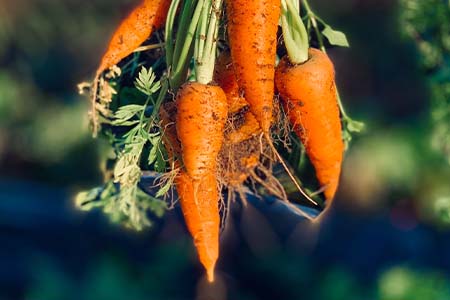
3.3 Plants for zone 3
Temperature range
3a: −40 °F (−40 °C) to −35.°F (−37.2 °C)
3b: −35 °F (−37.2 °C) to −30 °F (−34.4 °C)
Growing season
May to September
Regions
- Colorado
- Idaho
- Montana
- New York
- Maine
- Minnesota
- Wisconsin
- North Dakota
- South Dakota
Vegetables you can grow
- Winter squash
- Asparagus
- Cucumbers
- Celery
- Summer squash

Fruits you can grow
- Goodland apple
- Toka plum
- Cupid cherry
- Early gold pear
- Waneta plum
- Evans cherry
- Sweet sixteen apple
- Dolgo Crabapple
- Westcott apricot
Herbs you can grow
- Garlic
- Parsley
- Peppermint
- Catnip
- Caraway
- Horseradish
- French sorrel
- English Chamomile
Flowers you can grow
- Spurge
- Salvia
- Aster
- Virginia Bluebells
- Blanket flower
- Alpine Rockcress
- Snow-in- Summer
3.4 Plants for zone 4
Temperature range
4a: −30 °F (−34.4 °C) to −25 °F (−31.7 °C)
4b −25 °F (−31.7 °C) to −20 °F (−28.9 °C)
Regions
- Oregon
- Michigan
- Nebraska
- Nevada
- Iowa
- Montana
- Utah
- Wisconsin
- South Dakota
- Colorado
Growing season
June to October
Vegetables you can grow
- Melons
- Pumpkins
- Eggplant
- Okra
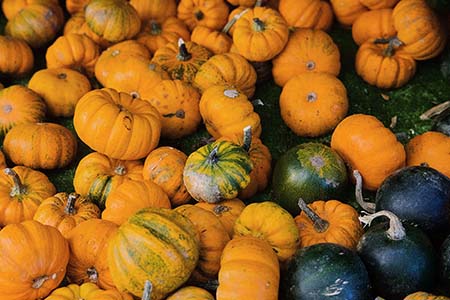
Fruits you can grow
- Railroad apple
- Nova pear
- Sumer crisp pear
- Alexandra apple
- Alderman Plum
- Butternut
- Ewing blue plum
Herbs you can grow
- Bee balm
- Thyme
- Mountain mint
- Garden sage
- Angelica
- Lemon balm
Flowers you can grow
- Phlox
- Coneflower
- Plantain lily
- Iris
- Daylily
3.5 Plants for zone 5
Temperature range
5a: −20 °F (−28.9 °C) to −15 °F (−26.1 °C)
5b: −15 °F (−26.1 °C) to −10 °F (−23.3 °C)
Regions
- Colorado
- Missouri
- Maryland
- Maine
- Minnesota
- Kansas
- Michigan
- Nebraska
- New York
- Utah
- West Virginia
- Illinois
- Indiana
- Connecticut
- New Hampshire
- Pennsylvania
Growing season
May to October
Vegetables you can grow
- Spinach
- Swiss chard
- Kale
- Radishes
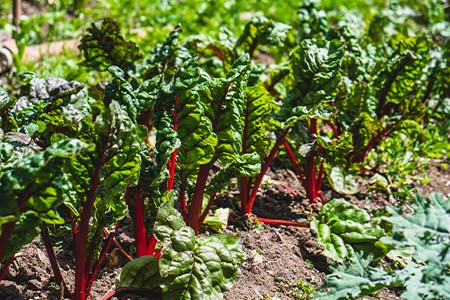
Fruits you can grow
- Warren pear
- Pink Lady Apple
- Snow beauty peach
- Harrow delight pear
- Pawpaw
- Superior plum
Herbs you can grow
- Lavender
- Calamine- the large flowering type
- Hybrid mints
Flowers you can grow
- Russian Sage
- Campanula
- Baptisia
- Cinquefoil
3.6 Plants for zone 6
Temperature range
6a: −10 °F (−23.3 °C) to −5 °F (−20.6 °C)
6b: −5 °F (−20.6 °C) to 0 °F (−17.8 °C)
Regions
- Texas
- Washington
- Pennsylvania
- Tennessee
- Rhode Island
- Ohio
- North Carolina
- Georgia
- Maryland
- Missouri
- New Hampshire
- Massachusetts
- New Mexico
- Kansas
- Illinois
- Indiana
- North Carolina
Growing season
April to October
Vegetables you can grow
- Bush beans
- Winter squash
- Butter lettuce
- Cherry Tomatoes
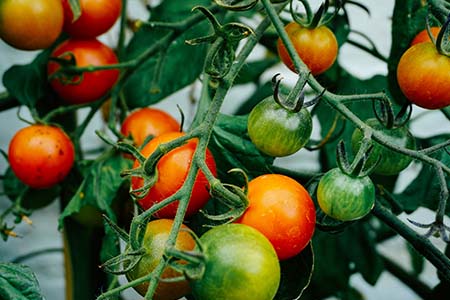
Fruits you can grow
- Berries
- Melons
- Pears
- Plums
- Grapes
- Peaches
- Apples
Herbs you can grow
- Oregano
- Coriander
- Borage
- Dill
- False Chamomile
Flowers you can grow
- Sedum
- Flowering fern
- Lady’s mantle
- False Sunflower
- Japanese Bottlebrush
- Floribunda rose
3.7 Plants for zone 7
Temperature range
7a: 0 °F (−17.8 °C) to 5 °F (−15 °C)
7b: 5 °F (−15 °C) to 10 °F (−12.2 °C)
Regions
- Georgia
- Idaho
- Mississippi
- South Carolina
- Arkansas
- Alabama
- Nevada
- New Mexico
- Oklahoma
- Connecticut
- Missouri
- Delaware
- California
- Tennessee
Growing season
April to November
Vegetables you can grow
- Turnips
- Arugula
- Hot peppers
- Sweet peppers
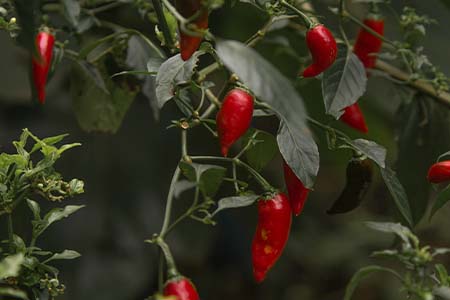
Fruits you can grow
- Ozark Plum
- Turkey fig
- Stella cherry
- Fuji apple
- Scout Apricot
- Moorpark Apricot
- Red gold nectarine
- Parker pear
- Contender peach
- Stella cherry
- Fuyu persimmon
- Cortland apple
- Bing cherry
Herbs you can grow
- Sage
- Tarragon
- Rue
- Feverfew
- Marjoram
Flowers you can grow
- Peony
- Clematis
- Candytuft
- Painted daisy
- Butterfly weed
- Chrysanthemum
3.8 Plants for zone 8
Temperature range
8a: 10 °F (−12.2 °C) to 15 °F (−9.4 °C)
8b: 15 °F (−9.4 °C) to 20 °F (−6.7 °C)
Regions
- Nevada
- Utah
- Arizona
- Washington
- Alabama
- Georgia
- Oklahoma
- Texas
- Tennessee
- Mississippi
- Virginia
- Maryland
- North Carolina
- South Carolina
Growing season
March to November
Vegetables you can grow
- Tomatoes
- Watermelon
- Filed peppers
- Hot peppers
- Okra
- Cantaloupe
Fruits you can grow
- Gala Apple
- Meyer lemon
- Ruby grapefruit
- Washington orange
- Bronze banana
- Clementine tangerine
- Marsh grapefruit
- Darjeeling banana
- Montmorency cherry
- Anna apple
- Alma fig
- Abaca Banana

Herbs you can grow
- Asiatic lily
- Lantana
- Phlox
- Mexican Petunia
- Hardy Geranium
3.9 Plants for zone 9
Temperature range
9a: 20 °F (−6.7 °C) to 25 °F (−3.9 °C)
9b: 25 °F (−3.9 °C) to 30 °F (−1.1 °C)
Regions
- Florida
- Louisiana
- Texas
- Utah
- Oregon
- Mississippi
- Nevada
- Hawaii
- Washington
- South Carolina
- Georgia
- Alabama
- Arizona
Growing season
February to December
Vegetables you can grow
- Broccoli
- Spinach
- Cauliflower
- Cabbage
- Brussel sprouts
Fruits you can grow
- Olives
- Star fruit
- Giant Pummelo
- Hardy Kiwi
- Trifoliate orange
- Mandarin orange
- Calamondin
- Passion fruit
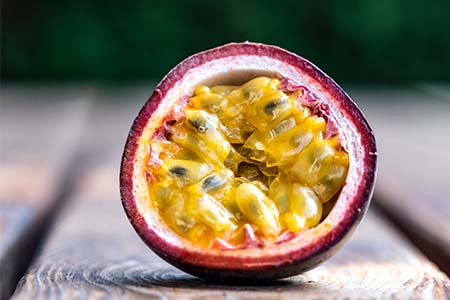
Herbs you can grow
- Mint
- Coriander
- Chives
- Basil
- Bay laurel
- Marjoram
- Lemon thyme
Flowers you can grow
- Zinnia
- Wisteria
- Dahlia
- Canina
- Rhododendrons
- Hydrangea
3.10 Plants for zone 10
Temperature range
10a: 30 °F (−1.1 °C) to 35 °F (1.7 °C)
10b: 35 °F (1.7 °C) to 40 °F (4.4 °C)
Regions
- Southern California
- Southern Florida
Growing season
January to December
Vegetables you can grow
- Bitter melon
- Peanuts
- Jicama
- Tomatillos
Fruits you can grow
- June plum
- Allspice tree
- Carrica papaya
- Jackfruit tree
- Soursop tree
- Apple guava
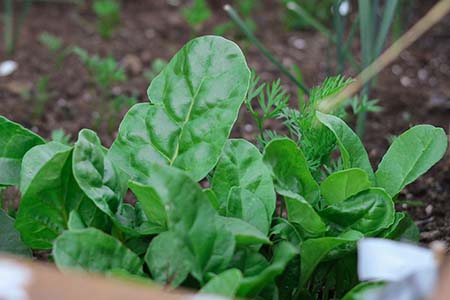
Herbs you can grow
- Ginger
- Miracle Fruit
- Galangal
- Curry leaf
- Mexican tarragon
Flowers you can grow
- Peruvian Lily
- Floss flower
- Agave
- Aeoniums
- Ornamental onion
- Geraniums
- Floss flower
- Hummingbird mint
3.11 Plants for zone 11
Temperature range
11a: 40 °F (4.4 °C) to 45 °F (7.2 °C)
11b 45 °F (7.2 °C) to 50 °F (10 °C)
Regions
- Hawaii
- Southern Florida
- Southern California
Growing seasons
January to December
It would be best to grow the crops in rotation as not all of them can survive the relatively warm summers experienced in these zones.
Vegetables you can grow.
- Radishes
- Cabbages
- Carrots
- Kales
- Beets
- Swiss chard
- Sweet peas
Fruits you can grow
- Macadamia
- Mango
- Seagrape
- Jaboticaba
- Natal plum
- Moringa tree
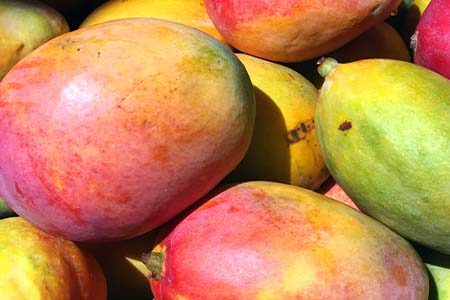
Herbs you can grow
- Thyme
- Mint
- Mexican oregano
- Basil
- Chives
- Lemongrass
Flowers to grow
- Kangaroo paw
- Begonias
- Anemone coronaria
- Drumstick Allium
- Ponytail palm
- Bougainvillea
3.12 Plants for zone 12
Temperature range
12a: 50 °F (10 °C) to 55 °F (12.8 °C)
12b: 55 °F (12.8 °C) to 60 °F (15.6 °C)
Regions
- Hawaii
- Puerto Rico
Growing season
The growing season in these regions last all year round because they do not experience frost.
Gardeners should grow more of the heat and drought-tolerant crops as these regions experience immense heat.
In addition, you can provide shade and employ irrigation to ensure your crops grow to maturity.
Vegetables you can grow
- Hot peppers
- Tomatoes
- Eggplant
- Bush beans
- Summer squashes
Fruits you can grow
- Banana
- Bignay
- Java Olive
- Alupag (similar to longan)
- Ackee
- African Apricot
- Bacuri Cascudo (African breadfruit)
- Tropical Almond

Herbs you can grow
- Sage
- Rosemary
- Culantro (not cilantro)
- Borage
- Savory
- Cilantro
Flowers you can grow
- Heliconia
- Marantaceae
- Zingiberaceae
- Lowiaceae
- Musaceae
3.13 Plants for zone 13
Temperature range
13a: 60 °F (15.6 °C) to 65 °F (18.3 °C)
13b: over 65 °F (over 18.3 °C)
Regions
Puerto Rico
Hawaii
Growing season
October to March, depending on your location if microclimate exists.
Vegetables you can grow
- Chili pepper
- Eggplant
- Tomatoes
- Bush beans
Fruits you can grow
- Lemon
- Orange
- Papaya
- Miracle Fruit
- Pineapple guava
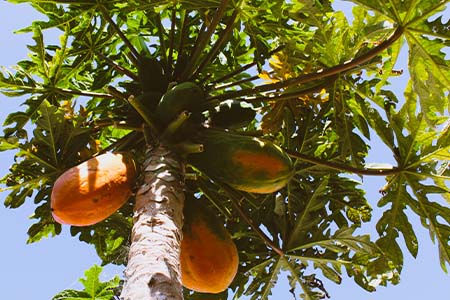
Herbs you can grow
Conclusion
For most people the best gardening zone is one that has a relatively long growing season and moderate temperature for them to grow a variety of vegetables without the need for greenhouse or special structures to increase the temperature of the growing environment.
If these are your criteria as well, zone 8, 9, and 10 would probably be what you are looking for.
Which is your favorite gardening zone? Tell us in the community.
Related
Top 12 Fruits That Grow True To Seed
Saving Seeds from Green, Unripe Fruits? (We Investigate)
7 Ways to Increase Soil Temperature (Effectively)
References
McKenney, D. W., Pedlar, J. H., Lawrence, K., Campbell, K., & Hutchinson, M. F. (2007). Beyond traditional hardiness zones: using climate envelopes to map plant range limits. BioScience, 57(11), 929-937.
Widrlechner, M. P., Daly, C., Keller, M., & Kaplan, K. (2012). Horticultural applications of a newly revised USDA plant hardiness zone map. HortTechnology, 22(1), 6-19.
Linderholm, H. W. (2006). Growing season changes in the last century. Agricultural and forest meteorology, 137(1-2), 1-14.
- Top 6 Drip Irrigation Systems for Raised Beds (2025) - January 31, 2025
- Top 10 Orchid Fertilizers: A Comprehensive Review (2025) - January 16, 2025
- Top 6 Slow-Release Fertilizers for Houseplants & Veggies (2025) - January 15, 2025

